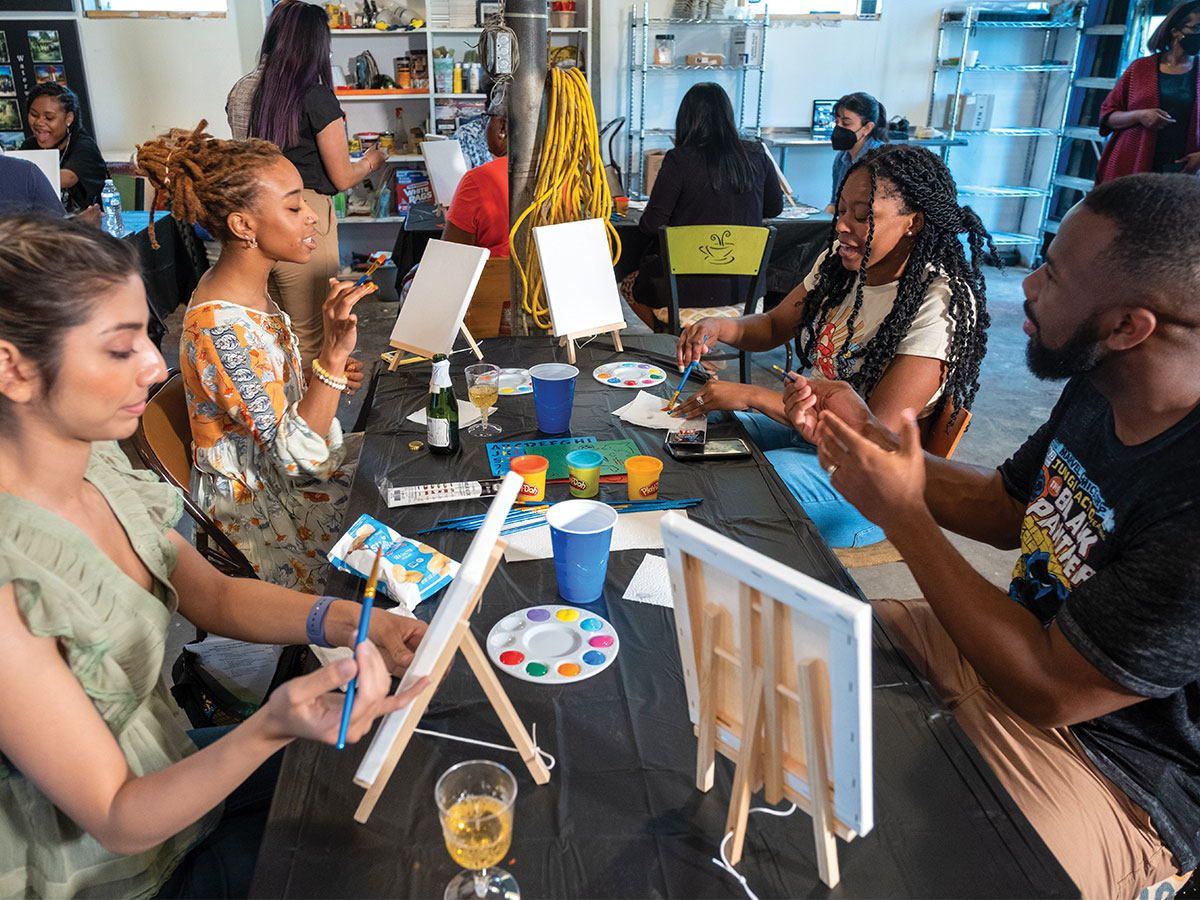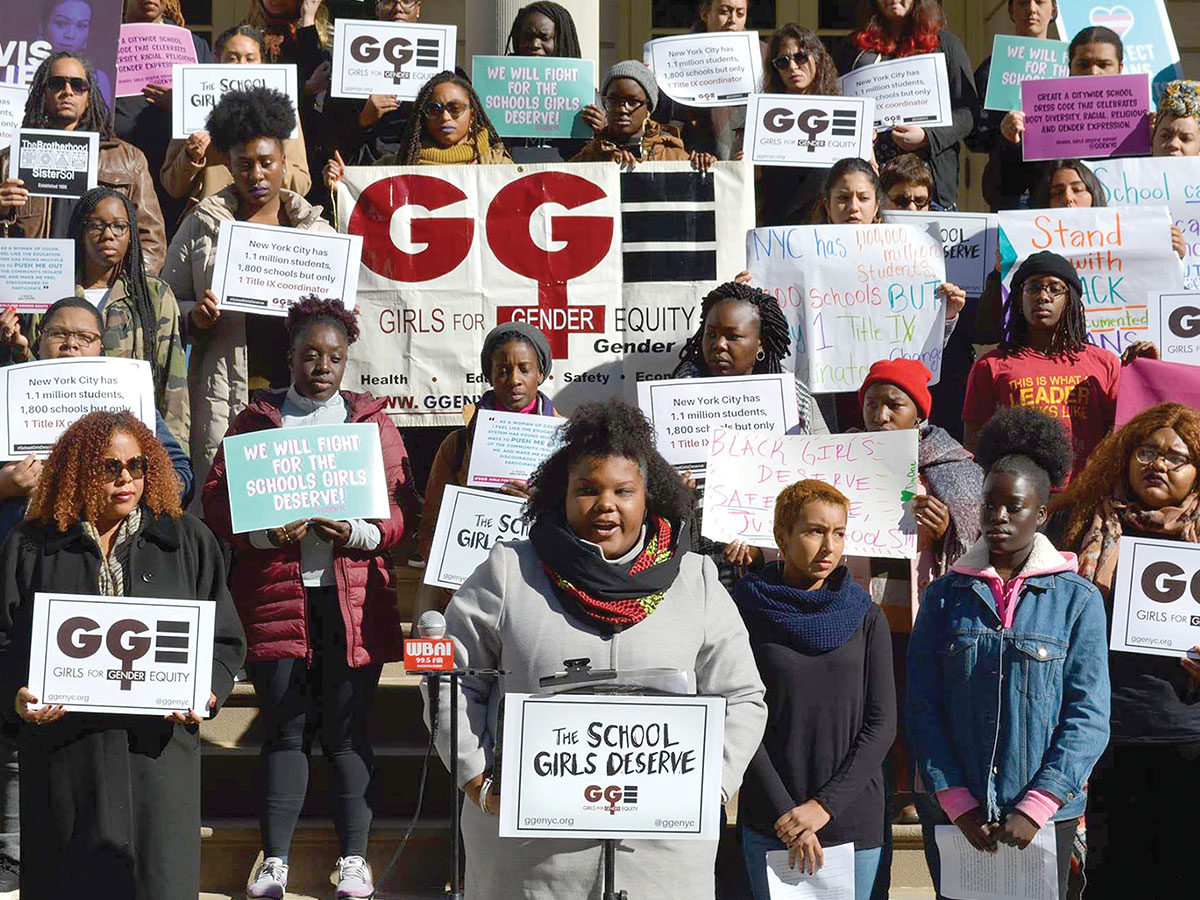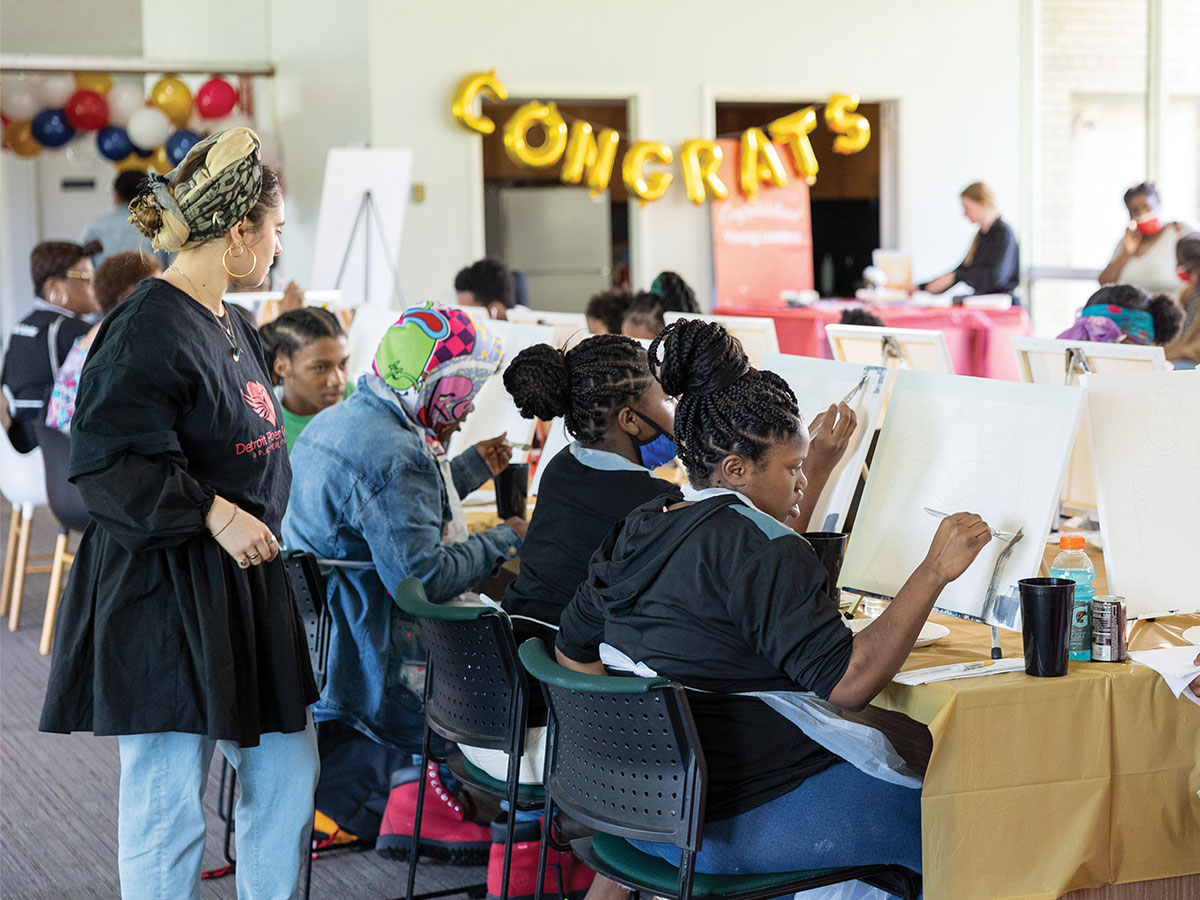
Funder Profile: Deaconess Foundation
Allison “Lissy” Rand is Vice President, Grantmaking and Strategy for the Deaconess Foundation, in Cleveland, Ohio. She joined Deaconess as Program Officer in 2014 after nearly 10 years as an Associate with Foundation Management Services (FMS) in Cleveland. At FMS, Lissy served as a program officer for five client foundations with funding priorities across health, human services and education. Lissy serves on the Board of Family Connections and is a 2017 graduate from Leadership Cleveland. Previously, Lissy worked in a programmatic and policy capacity with the American Academy of Pediatrics and the National Easter Seal Society, the University of Wisconsin School of Medicine, and NetWellness. She is a graduate of Northwestern University and received a Master of Social Work degree from University of Michigan and a Master of Public Health degree from University of Illinois.
Deaconess Foundation is a private foundation with a mission to provide resources to increase the ability of individuals in Cuyahoga County with the least wealth and opportunity to prepare for, obtain, and maintain employment. Deaconess is a collaborative partner in philanthropic efforts that strengthen the human services sector in Cuyahoga County. Deaconess Foundation was formed from the sale, in December 1994, of Deaconess Health Systems which operated, among other things, Deaconess Hospital of Cleveland. For 71 years, the hospital was a significant community asset located at 4229 Pearl Road in the old Brooklyn neighborhood of Cleveland. The proceeds of the sale were used to establish Deaconess Foundation in February 1997.
How does Deaconess Foundation think about reporting – what is its raison d’etre?
We think about reporting primarily as a learning tool. Grant reports help us understand the realities of implementation, things like how partnerships are working, whether new program models are working, how our grantees manage multiple funding streams, etc., etc. When the reporting process goes well, we nearly always learn that some of the assumptions – made by the Foundation or by the grantee, or, most often, by both of us – were not fully accurate. We can each incorporate these lessons into future conversations and decisions. The reporting process helps us to sharpen our thinking, so we can make better decisions across our entire portfolio.
How has your approach to reporting evolved over the life of the foundation?
Deaconess has always had a small team and an engaged board. Our learning was more anecdotal and less formal. So, while staff and board interacted with grantees quite a bit, reporting seemed primarily to be a compliance activity. Reports lived in files, but the content of the reports were rarely fed back into the process in a systematic way. This was partly a function of a very broad grantmaking portfolio, dispersed across many different program areas. It was more difficult to apply the lessons learned from one grant to another. It was also difficult to use reports to assess the foundation’s effectiveness and impact, overall. Today, we make fewer, larger, and longer-term grants around a singular focus – employment in Cuyahoga County – so both the insights and their applicability to future decisions can occur more naturally. The focus has also allowed us to develop a more systematic approach to learning.
How has the shift to more focused grantmaking influenced grant reporting?
We have climbed a pretty steep learning curve when it comes to employment grantmaking, so both staff and board shared an eagerness to learn and get better. Report forms are now customized. We ask grantees to provide specific performance data, which comes from the targets they set – with our help – during the application process. We ask specific questions to elicit information that will help the Foundation learn. For example, for a grant that funded the launch of an internship program for high school students, we asked how relationships were established with employers and for a sample employer agreement. From other grantees, we know that many employment-focused nonprofits struggle to develop strong, lasting relationships with employers. We want to learn, so we can help our grantees and employers learn, the best ways to build those relationships. Grant reports will help us do this.
To make sure the reports actually function this way, we developed a systematic way to use the information they provide. I summarize the reports for the Board and offer a brief “staff comments” section. This helps the Board learn, but also forces me to reflect on what I think we learned and how we can use that information to improve. This report summary gets posted to our internal blog and appended to the next grant submission from the organization. This takes some discipline to do, but it has so many benefits – not least of which is more formal record of our grantmaking, what’s being learned, and how these lessons can be applied to future decisions. What we’ve learned is no longer “stuck” in my or a particular staff or board member’s mind.
How have changes to the grant reporting process helped Deaconess become more effective?
Since shifting our grantmaking focus and strategy, Deaconess has made significant changes to our process. We used to require written reports at six months, but we found that the reports were preliminary or premature. What could be learned at that point was seldom worth the effort grantees were putting into the reports. Today, we schedule in-person “update meetings” at around the six-month mark. Unlike the written reports, we’ve found these conversations to be revealing and an opportunity for learning, for both the grantee and for the foundation. Rather than focusing on what has been accomplished, these conversations are more likely to touch on challenges and redirections. The stakes are lower at this stage. No one would expect a grantee to have all the answers after only six months, so the conversations can be more open, honest, and substantive. This helps us to help grantees earlier in the process, while also helping us get smarter about the grantmaking decisions we make and the advice we can offer the next grantee who tackles a similar project. It also positions us to serve in an advisory or consultative role, rather than a “compliance officer.”
We are able to help grantees reflect, share lessons we’ve gleaned from other grants, and make timely connections to other potential partners, funders, or community groups. After these meetings, I write up summaries on our internal blog for our Board. The goal of the blog is to help the Board learn how grantees are doing and the kinds of challenges they are facing, without the pressure of a looming financial decision. Board members are members of the community, so they, too, can provide connections and play this advisory role through Deaconess.
We also adjusted the timing of our “final” grant report. Grant reports had been due twelve months after every award, which meant, typically, we would make the next grant decision before reviewing the report. Today, we ask for the written reports at the time of the next submission if the grantee is resubmitting, or 12 months after the award if they are not.
You haven’t really emphasized or even mentioned financial reporting – why not?
Of course, we must be sure that Deaconess funds go where they are supposed to go, but one of the benefits of being a smaller and more focused foundation, is that we can be more flexible and urge grantees to pick up the phone when they have a question or a problem. With budget reports, I look at the bottom line to see that things are on track. Financial issues that trigger a question are when the money has not been spent – it tells me that the project is taking longer than expected, a key position can’t be filled, or in some other ways, is not going as planned.
Over the years, I’ve gotten calls from grantees letting me know they were able to buy a computer for $45 less than their proposal estimated, or that they had paper donated so they were going to move the money from that line item to another. I really appreciate the honesty, but I feel like that level of reporting wastes the grantee’s and my time.
Frankly, by the time we make a grant, I’ve had in-depth conversations with the organization; I know and trust their capacity to manage their budget and achieve the goals of the grant. Most are managing large organizational budgets, with multiple (often government) funders, with exacting reporting and budget requirements
Imagine you’ve secured a “goPro” camera to a typical grant report. What would the resulting video tell us about reporting, from the time a report enters your foundation’s door (or in-box)?
The process is fairly simple in our office (with a staff of just two):
- A report comes in, I send an acknowledgement email which states when I expect to review it (I am often slower than I anticipate, so I’m trying to get more realistic in these messages).
- Once I’ve reviewed the report, I send another email, that contains follow-up questions or comments. I try to offer feedback on every report, directly to the grantee, so grantees understand that the efforts they make to share information with us is meaningful and makes a difference to our process and decisions. If I don’t need any further information, this email indicates that the grant is now closed.
- The report gets attached to the original grant request in our database, so it can be easily found in future.
- I write the summary and include staff comments; again, this summary is attached to the grantee record in the database.
- The next time the organization requests funding, the summary and staff comments get appended to the Proposal Write-up so I can explicitly refer to something in that document in my “funding rationale” section of the Write-up.
- The Board and CEO interact with the info in the report through the blog and/or through the next Proposal Write-Up.
Since you’ve helped to create this process basically from scratch, what advice would you give to others making a similar shift and are there other improvements in the works?
Our in-person update meetings make the most difference. I would throw everything else away, to save those. Those are so much more robust than anything that comes in on paper. I think it matters that I am the program officer and not the CEO or a board member, I think I can help grantees see me (and thus, Deaconess) as a safe ally that is invested in their success. We are! But, just saying that or just urging candor in a written report is not enough to really build trusting relationships. In-person conversations let us see the whole picture, and we are a better grantmaker and I think the grant itself has a better chance of success because of these visits.
Otherwise, so far, we’ve been satisfied with the changes – although there is always room for improvement! Here are a few adjustments we’ll be trying in 2018:
- Customized Reports: We would like to get even better at customizing the report questions. We base these on the application, and so I feel pressure to get reporting forms out with the grant award letters. I often feel a big-time crunch and wish I could be more thoughtful in creating these. This year, I’m trying to anticipate the kinds of reporting questions I’d ask even as I’m reviewing the grant application. So, I’m not going back after grant decisions when deadlines are looming and the docket is more of a blur.
- Internal Process: We need to build in enough time to ensure that the CEO and I are reading the six-month meeting summaries at the beginning of any subsequent application submission process. We haven’t been as disciplined about this. Rather than skimming through them, I think we need to spend more time and really pay attention to how issues discovered during the six-month visits could inform how or whether we make another grant.
What’s next? Are you grappling with any challenges right now?
I’d welcome advice on a perpetual issue! I feel great making all of this information available to our Board through the internal blog, but it has not yet become a habit for Board members to log in and read them. I would like to know if there’s a better way to engage our Board. Or, is this a realistic goal? I know the writing is valuable to staff, because it gets us thinking, collects our thoughts, and synthesizes disparate experiences and ideas.
But just making this content accessible to the Board does not mean a majority of the Board is really integrating the information and applying what is learned to future decision-making. Is there another question we should be asking that would make reports more compelling to the Board? Is it just a matter of limited time and attention? Or something else? I know there’s only so much a volunteer can absorb. But, if nobody is reading these summaries, and the reports only inform staff thinking and rationale, then I think we have missed an opportunity to inform the larger ecosystem.



